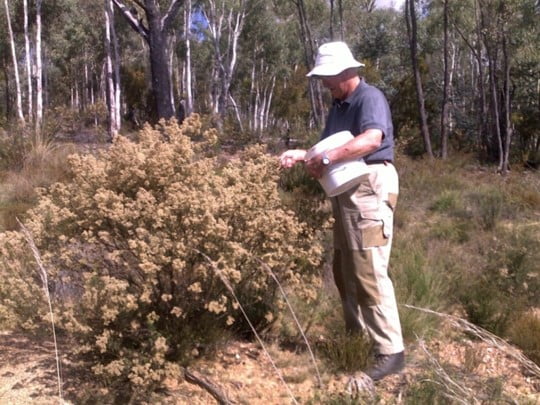Rivers of Carbon:
Working together with Julie and David from the Australian National Botanic Gardens we have developed a list of threatened plant species that occur within the region covered by the our Rivers of Carbon projects. These species are protected under the Environment Protection and Biodiversity Conservation Act 1999 (EPBC Act), a national scheme of environment and heritage protection, and biodiversity conservation.
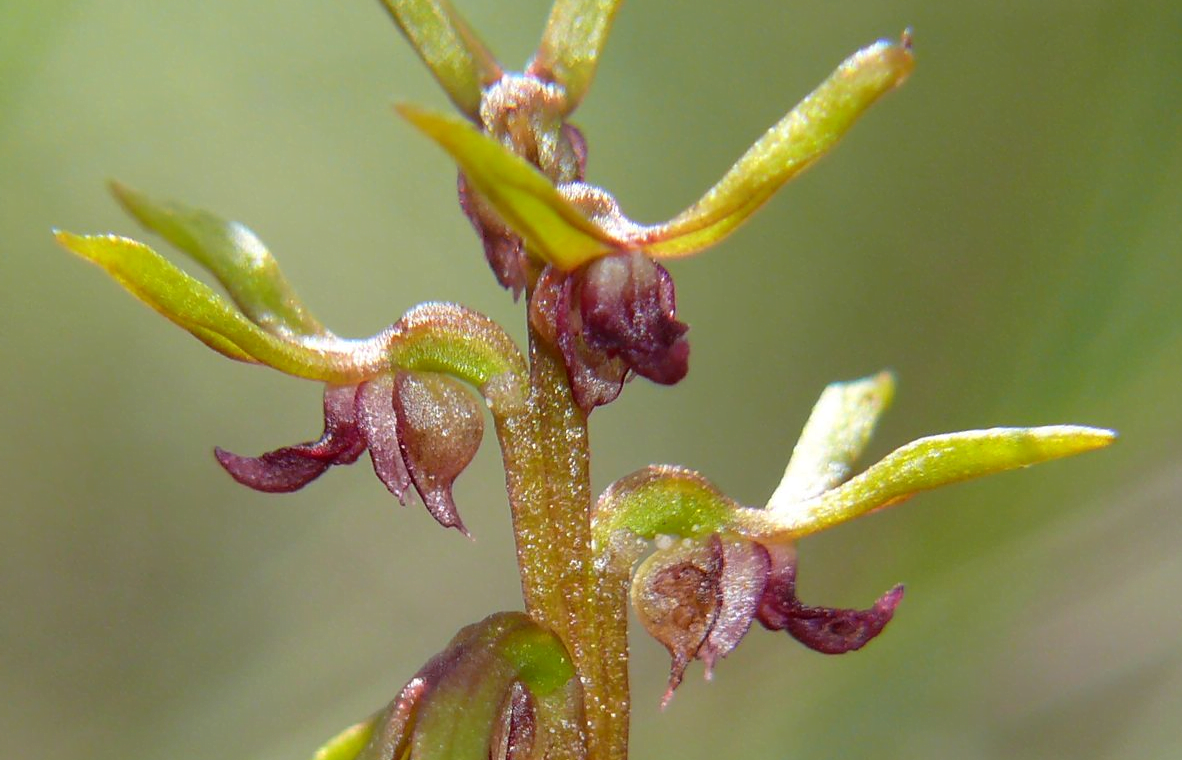
Brittle Midge Orchid, Genoplesium baueri
Prepared in collaboration with the Australian National Botanical Garden

Australia’s plant species total more than 20,000 with 92% of them being endemic – that is, they only occur naturally in Australia! More than 1,300 are listed as threatened species and these are among the most at risk of disappearing. This unique biodiversity is our natural capital, and as custodians, landowners and land managers we can make a difference. All of us have an opportunity to contribute to helping secure our environment’s future by protecting, conserving, being more aware of, and actively managing our flora and the wildlife habitat it supports.
What are some of the ways you can protect threatened species on your property? Well as the old saying goes, ‘We can’t look after what we don’t know about’.
A key early step toward plant conservation is knowing what’s there and where to get help. We have put together this guide to help you as a useful reference for the rare and unique plant species in your area:
Use the search function below by typing in a common name or species latin name. To show the full list again, please clear the search box.
| Species | Common name | Commonwealth listing | NSW State lising | Family | Items of interest | Image | More Information |
|---|---|---|---|---|---|---|---|
| Acacia bynoeana | Bynoe's Wattle, Tiny Wattle | Vulnerable | Endangered | Fabaceae | Low spreading shrub, grows in heath and dry sclerophyll forests on sandy soils. |  View Source | Click here |
| Acacia flocktoniae | Flockton Wattle | Vulnerable | Vulnerable | Fabaceae | Grows in dry sclerophyll forest on sandstone. | 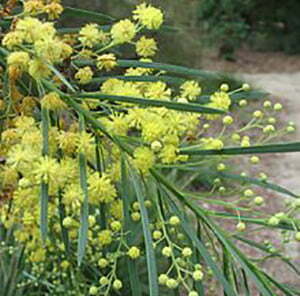 View Source | Click here |
| Acacia pubescens | Downy Wattle, Hairy Stemmed Wattle | Vulnerable | Vulnerable | Fabaceae | Brilliant yellow flowers August to October. | 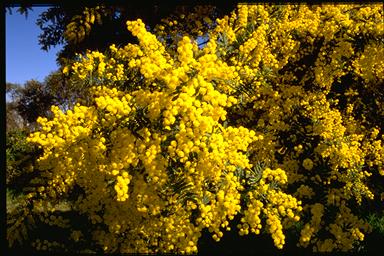 View Source | Click here |
| Allocasuarina glareicola | Endangered | Endangered | Casuarinaceae | A shrubby she-oak that spreads vegetatively. | 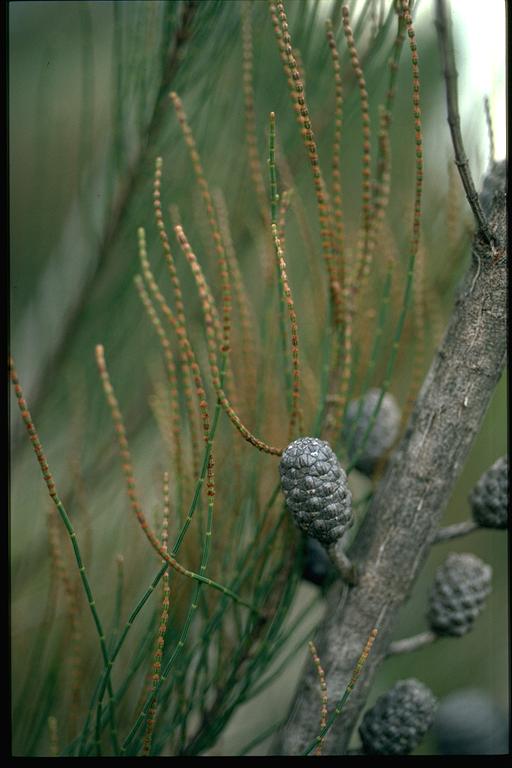 View Source | Click here | |
| Ammobium craspedioides | Yass Daisy | Vulnerable | Vulnerable | Asteraceae | Tolerates light grazing. | 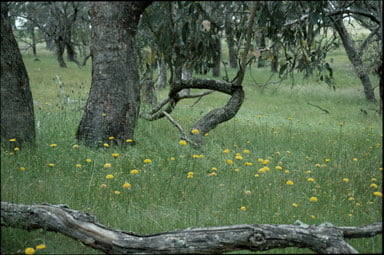 View Source | Click here |
| Amphibromus fluitans | River Swamp Wallaby-grass, Floating Swamp Wallaby-grass | Vulnerable | Vulnerable | Poaceae | Grows in swamps and swamp margins, dams and seepage drains with seasonally fluctuating water levels. | 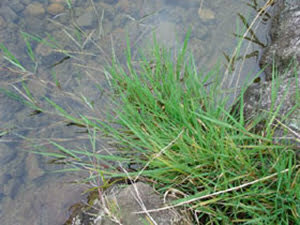 View Source | Click here |
| Baloskion longipes | Dense Cord-rush | Vulnerable | Vulnerable | Restionaceae | Grows in swamps and depressions in sandy alluvium, seasonally inundated peat and sometimes with sphagnum moss. | 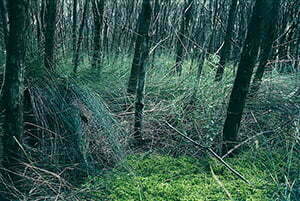 View Source | Click here |
| Boronia deanei | Deane's Boronia | Vulnerable | Vulnerable | Rutaceae | Riparian species with aromatic foliage and beautiful flowers August - November. | 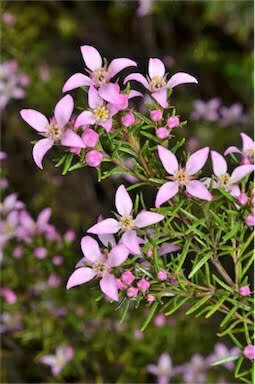 View Source | Click here |
| Bossiaea oligosperma | Few-seeded Bossiaea | Vulnerable | Vulnerable | Fabaceae | Grows on sandstone and loamy soils. | 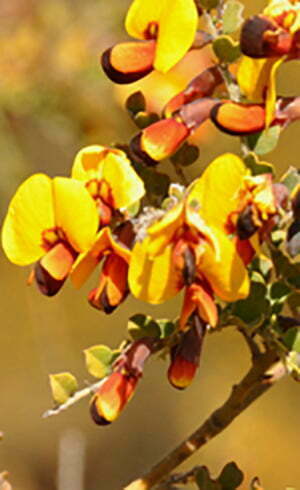 View Source | Click here |
| Caladenia tessellata | Thick-lipped Spider-orchid, Daddy Long-legs | Vulnerable | Endangered | Orchidaceae | Ground orchid. Yellow-green flowers with red markings in spring. | 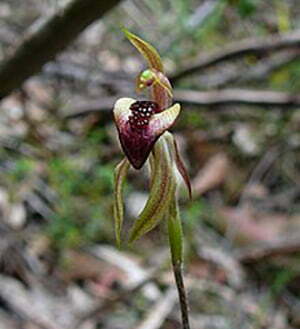 View Source | Click here |
| Callitris oblonga | Pygmy Cypress-pine, Pigmy Cypress-pine, Dwarf, Cypress-pine | Vulnerable | Vulnerable | Cupressaceae | Grows in riparian zone as well as drier sites on granite soils. Fast growing. | 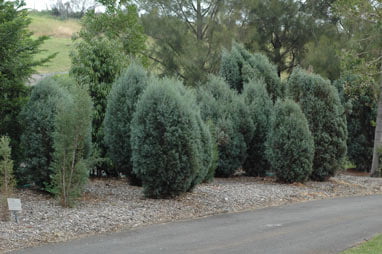 View Source | Click here |
| Calotis glandulosa | Mauve Burr-daisy | Vulnerable | Vulnerable | Asteraceae | Seed dispersed by sticky burrs, will not tolerate heavy grazing. | 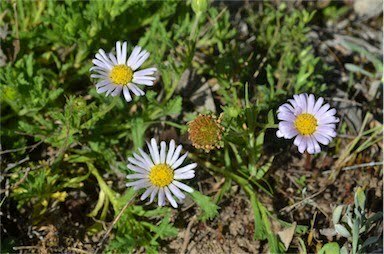 View Source | Click here |
| Commersonia prostrata | Dwarf Kerrawang | Endangered | Endangered | Malvaceae | Mat-forming shrub that grows in a variety of soils including ephemeral wetlands. | 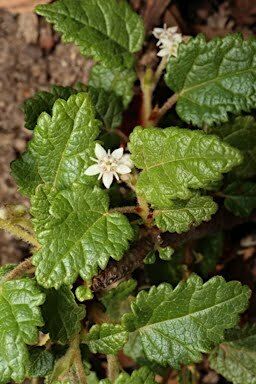 View Source | Click here |
| Cryptostylis hunteriana | Leafless Tongue-orchid | Vulnerable | Vulnerable | Orchidaceae | Grows in a variety of habitats including swamp-heath and woodland. | 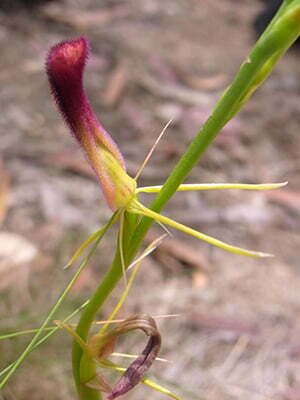 View Source | Click here |
| Cynanchum elegans | White-flowered Wax Plant | Endangered | Endangered | Apocynaceae | Climber with corky stems capable of suckering in response to disturbance. | 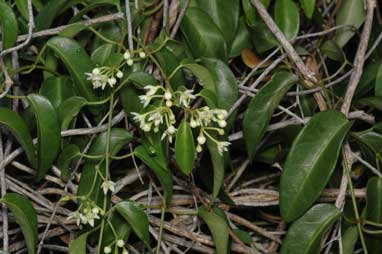 View Source | Click here |
| Daphnandra johnsonii | Illawarra Socketwood | Endangered | Endangered | Atherospermataceae | Aromatic rainforest tree restricted to the Illawarra region. | 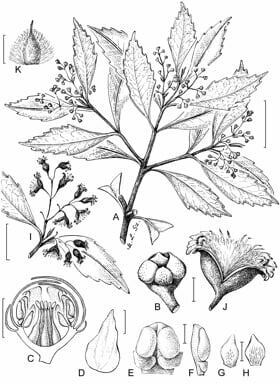 View Source | Click here |
| Diuris aequalis | Buttercup Doubletail | Vulnerable | Endangered | Orchidaceae | Terrestrial 'donkey' orchid. | 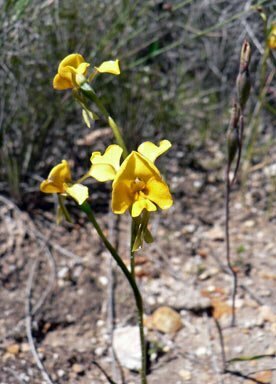 View Source | Click here |
| Diuris ochroma | Pale Golden Moths | Vulnerable | Endangered | Orchidaceae | Terrestrial orchid found in open grassy woodland and sub-alpine grassland habitats. | 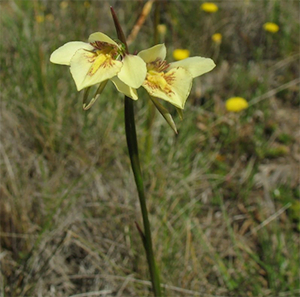 View Source | Click here |
| Dodonaea procumbens | Trailing Hop-bush | Vulnerable | Vulnerable | Sapindaceae | Mat forming shrub with red papery 'hop-like' fruits in late spring and summer. | 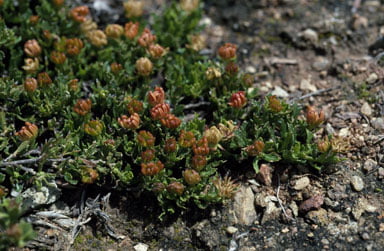 View Source | Click here |
| Eucalyptus aggregata | Black Gum | Vulnerable | Vulnerable | Myrtaceae | Medium sized woodland tree which grows on alluvial soils, on cold, and poorly drained flats adjacent to creeks and small rivers. |  View Source | Click here |
| Eucalyptus aquatica | Mountain Swamp Gum, Broad-leaved Sallee, Broadleaved Sally | Vulnerable | Vulnerable | Myrtaceae | Grows in permanently waterlogged peaty soils, swaps and poorly drained areas. | 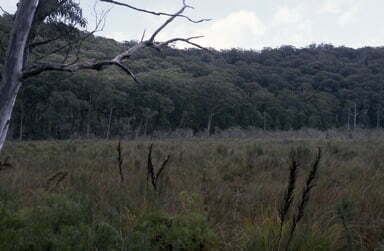 View Source | Click here |
| Eucalyptus benthamii | Camden White Gum, Nepean River Gum | Vulnerable | Vulnerable | Myrtaceae | Grows on alluvial river flats. | 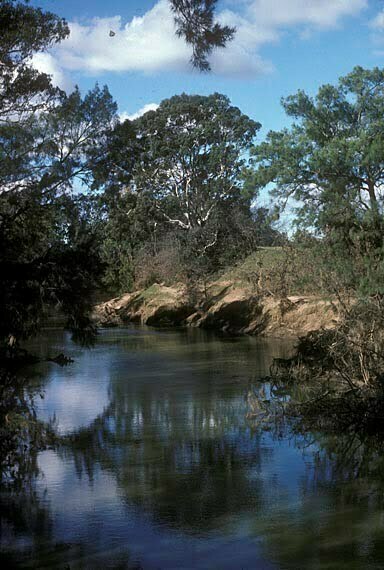 View Source | Click here |
| Eucalyptus kartzoffiana | Araluen Gum | Vulnerable | Vulnerable | Myrtaceae | Grows near rivers, in woodlands or wet sclerophyll forests on soils derived from granite. | 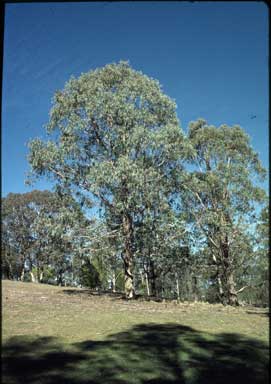 View Source | Click here |
| Eucalyptus macarthurii | Camden Woollybutt, Paddys River Box | Endangered | Endangered | Myrtaceae | Tall tree, grows in grassy woodlands. | 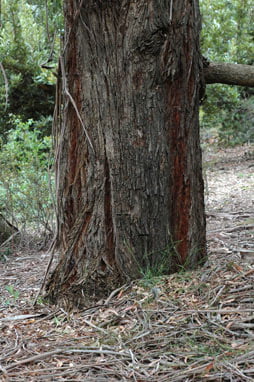 View Source | Click here |
| Eucalyptus recurva | Mongarlowe Mallee | Critically endangered | Critically endangered | Myrtaceae | The rarest known eucalypt. | 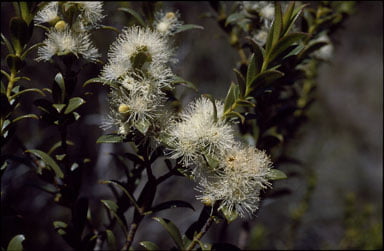 View Source | Click here |
| Genoplesium baueri | Brittle Midge Orchid | Endangered | Endangered | Orchidaceae | Terrestrial orchid. | 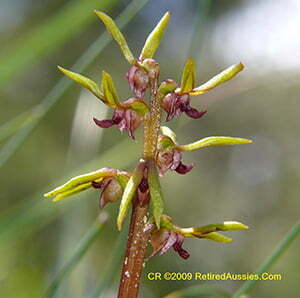 View Source | Click here |
| Genoplesium plumosum | Plumed Midge-orchid, Tallong Midge Orchid | Endangered | Critically endangered | Orchidaceae | An inconspicuous ground orchid with 'upside down' flowers. | 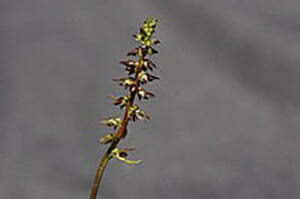 View Source | Click here |
| Genoplesium vernale | East Lynne Midge-orchid | Vulnerable | Vulnerable | Orchidaceae | Flowers resemble midge-like insects clustered on the stem. | 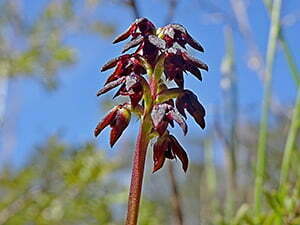 View Source | Click here |
| Gentiana wingecarribiensis | Wingecarribee Gentian | Endangered | Critically endangered | Gentianaceae | Annual herb. Grows in bogs and sedge communities. | 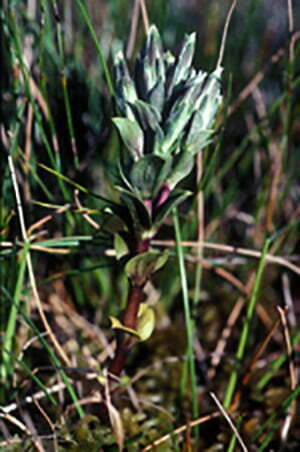 View Source | Click here |
| Grevillea molyneuxii | Wingello Grevillea | Endangered | Vulnerable | Proteaceae | Low spreading shrub with red flowers throughout the year. | 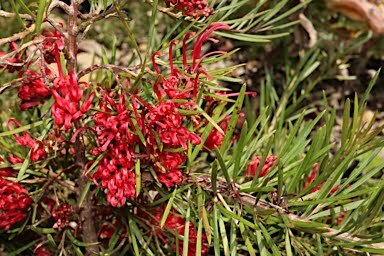 View Source | Click here |
| Grevillea parviflora subsp. parviflora | Small-flower Grevillea | Vulnerable | Vulnerable | Proteaceae | Low spreading suckering shrub endemic to NSW. |  View Source | Click here |
| Grevillea rivularis | Carrington Falls Grevillea | Endangered | Critically endangered | Proteaceae | Riparian species sometimes found in eucalypt woodland. Confined to Budderoo National Park. | 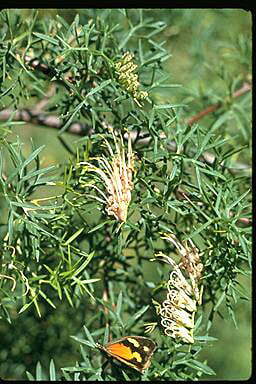 View Source | Click here |
| Hakea dohertyi | Kowmung Hakea | Endangered | Endangered | Proteaceae | Grows in dry sclerophyll forest. |  View Source | Click here |
| Haloragis exalata subsp. exalata | Wingless Raspwort, Square Raspwort | Vulnerable | Vulnerable | Haloragaceae | Perennial herb growing in riparian zones and disturbed sites. | 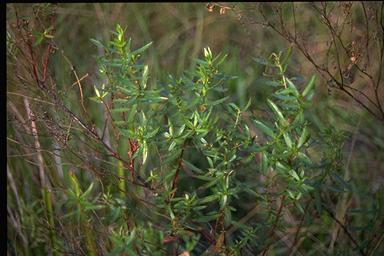 View Source | Click here |
| Irenepharsus trypherus | Delicate Cress, Illawarra Irene | Endangered | Endangered | Brassicaceae | Annual or short-lived perennial herb. | 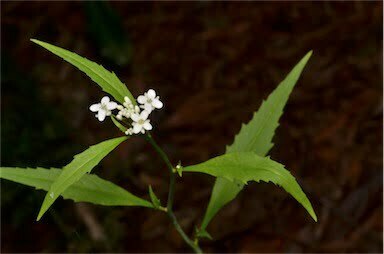 View Source | Click here |
| Kunzea cambagei | Cambage Kunzea | Vulnerable | Vulnerable | Myrtaceae | Prostrate spreading shrub. Grows on damp sandy soils. | 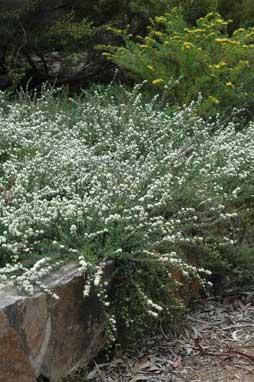 View Source | Click here |
| Lepidium hyssopifolium | Basalt Pepper-cress, Peppercress, Rubble Peppercress, Pepperweed | Endangered | Endangered | Brassicaceae | Aromatic perennial herb. |  View Source | Click here |
| Leucochrysum albicans subsp. Tricolor | Hoary Sunray, Grassland Paper-daisy | Endangered | not listed | Asteraceae | Perennial everlasting daisy. Depends on bare ground for seed germination. | 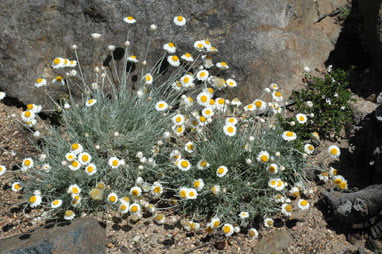 View Source | Click here |
| Leucopogon exolasius | Woronora Beard-heath | Vulnerable | Vulnerable | Ericaceae | Grows in woodland on sandstone and along sandy creek banks. | 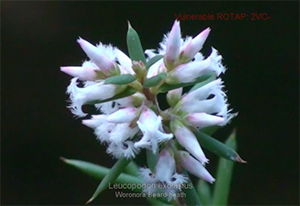 View Source | Click here |
| Melaleuca biconvexa | Biconvex Paperbark | Vulnerable | Vulnerable | Myrtaceae | Grows in damp sites often along watercourses. | 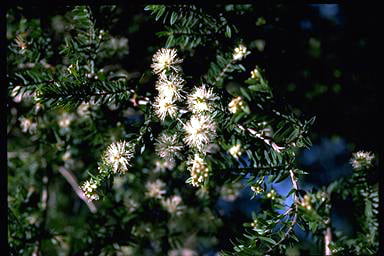 View Source | Click here |
| Melaleuca deanei | Deane's Melaleuca | Vulnerable | Vulnerable | Myrtaceae | Grows in wet heath on sandstone and in woodlands. | 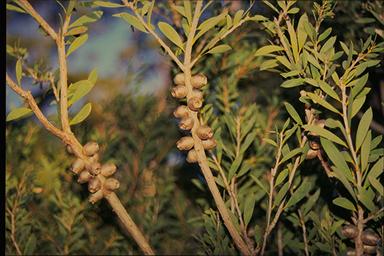 View Source | Click here |
| Pelargonium sp. Striatellum (G.W.Carr 10345) | Omeo Stork's-bill | Endangered | Endangered | Geraniaceae | Tufted perennial herb with pink flowers from October to March. Sometimes colonises lake beds during dry periods. | 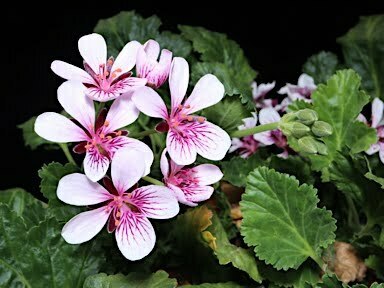 View Source | Click here |
| Persicaria elatior | Knotweed, Tall Knotweed | Vulnerable | Vulnerable | Polygonaceae | Tall herb. Grows in damp sites often along water courses. | 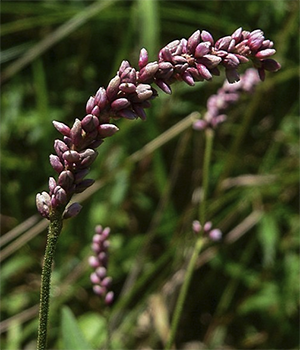 View Source | Click here |
| Persoonia acerosa | Needle Geebung | Vulnerable | Vulnerable | Proteaceae | Attractive small shrub with yellow flowers in summer. |  View Source | Click here |
| Persoonia glaucescens | Mittagong Geebung | Vulnerable | Endangered | Proteaceae | Grows in dry sclerophyll forest and woodland communities on sandstone. |  View Source | Click here |
| Persoonia hirsuta | Hairy Geebung, Hairy Persoonia | Endangered | Endangered | Proteaceae | Grows on stony sandstone soils often in disturbed areas. | 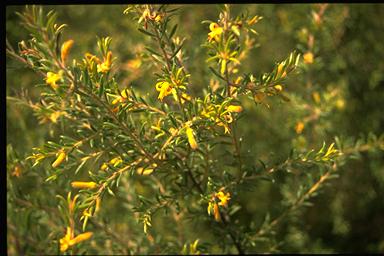 View Source | Click here |
| Phyllota humifusa | Dwarf Phyllota | Vulnerable | Vulnerable | Fabaceae | Prostrate pea sometimes found near swamps. Grows in deep sandy soils and gravelly loams. | 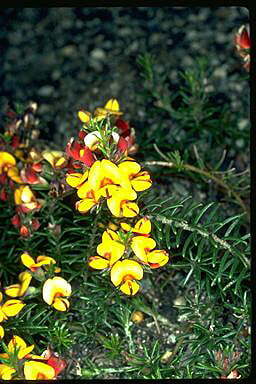 View Source | Click here |
| Pimelea axiflora subsp. pubescens | Bungonia Rice-flower | Endangered | Endangered | Thymelaeceae | Grows on limestone rocky outcrops and cliff faces. | 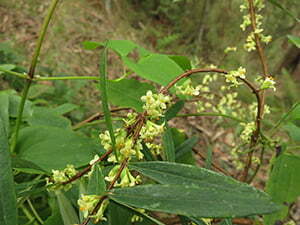 View Source | Click here |
| Pimelea spicata | Spiked Rice-flower | Endangered | Endangered | Thymelaeceae | Delicate spreading small shrub, grows in well- structured clay soils. |  View Source | Click here |
| Plinthanthesis rodwayi | Budawangs Wallaby-grass | Vulnerable | Critically endangered | Poaceae | Perennial tussock grass restricted to mountain tops in the Budawangs. | 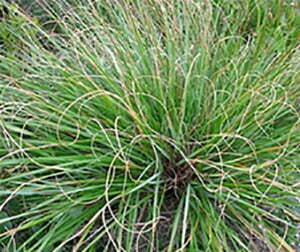 View Source | Click here |
| Pomaderris brunnea | Rufous Pomaderris | Vulnerable | Endangered | Rhamnaceae | Bushy shrub, sometimes suckering. Grows in floodplains and creeklines. |  View Source | Click here |
| Pomaderris cotoneaster | Cotoneaster Pomaderris | Endangered | Endangered | Rhamnaceae | Tall bushy shrub bearing some resemblance to the exotic invasive Cotoneaster. | 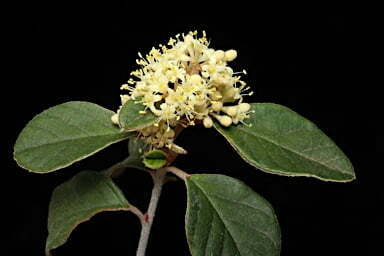 View Source | Click here |
| Pomaderris delicata | Delicate Pomaderris | Critically endangered | Critically endangered | Rhamnaceae | Delicate shrub with yellow flowers in spring. Grows in dry open forest on shallow soils. | 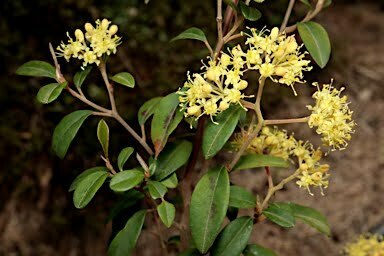 View Source | Click here |
| Pomaderris pallida | Pale Pomaderris | Vulnerable | Vulnerable | Rhamnaceae | Compact rounded shrub with silvery-grey foliage. |  View Source | Click here |
| Pomaderris sericea | Bent Pomaderris, Silky Pomaderris | Vulnerable | Endangered | Rhamnaceae | Low shrub found on sandstone soils in NSW. | 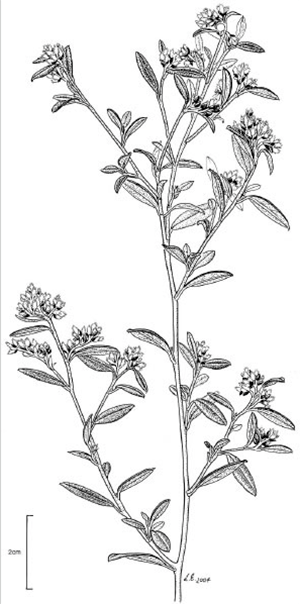 View Source | Click here |
| Prasophyllum affine | Jervis Bay Leek Orchid, Culburra Leek-orchid, Kinghorn Point Leek-orchid | Endangered | Endangered | Orchidaceae | Coastal ground orchid pollinated by specialised wasp species. | 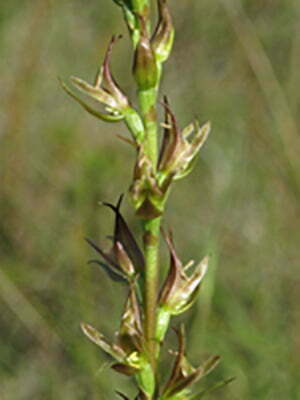 View Source | Click here |
| Prasophyllum fuscum | Tawny Leek-orchid, Slaty Leek-orchid | Vulnerable | Critically endangered | Orchidaceae | Ground orchid found in wet sites. | 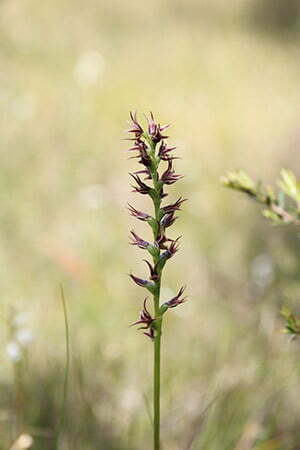 View Source | Click here |
| Prasophyllum petilum | Tarengo Leek Orchid | Endangered | Endangered | Orchidaceae | Distinguished from other onion orchids found in the same habitat by its pinkish-purple leaf base. | 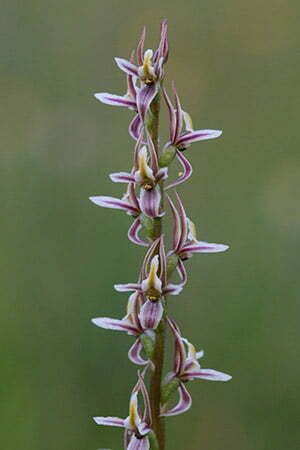 View Source | Click here |
| Pterostylis gibbosa | Illawarra Greenhood, Rufa Greenhood, Pouched Greenhood | Endangered | Endangered | Orchidaceae | Ground orchid found in poorly drained sites. |  View Source | Click here |
| Pterostylis pulchella | Pretty Greenhood, Waterfall Greenhood | Vulnerable | Vulnerable | Orchidaceae | Found on cliff faces close to waterfall and along creek banks. |  View Source | Click here |
| Pterostylis saxicola | Sydney Plains Greenhood | Endangered | Endangered | Orchidaceae | Ground orchid with reddish-brown and green translucent flowers. |  View Source | Click here |
| Pultenaea elusa | Elusive Bush-pea | Endangered | Critically endangered | Fabaceae | Only recorded twice in 1938. Unsuccessful searches since suggest population is highly restricted or possibly already extinct. | 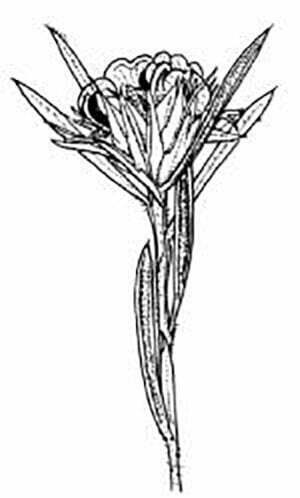 View Source | Click here |
| Rutidosis leptorhynchoides | Button Wrinklewort | Endangered | Endangered | Asteraceae | Perennial daisy, grows in grassland and woodland communities. | 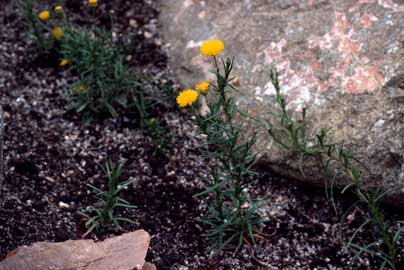 View Source | Click here |
| Swainsona recta | Small Purple-pea, Mountain Swainson-pea | Endangered | Endangered | Fabaceae | Small perennial forb with purple flowers in spring. Plants experience a summer dormancy and dieback, reshooting from a deep taproot the following autumn/winter. | 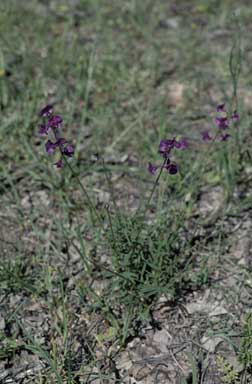 View Source | Click here |
| Syzygium paniculatum | Magenta Lilly Pilly, Magenta Cherry, Daguba, Scrub Cherry, Creek Lilly Pilly, Brush Cherry | Vulnerable | Endangered | Myrtaceae | Attractive tree restricted to littoral rainforest communities on the central and south coast of NSW. | 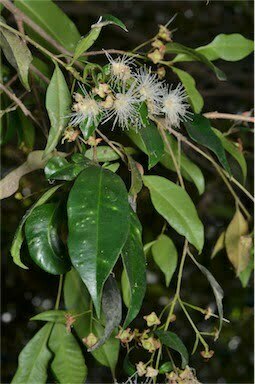 View Source | Click here |
| Thelymitra kangaloonica | Kangaloon Sun Orchid | Critically Endangered | Critically endangered | Orchidaceae | Thought to be a short-lived perennial, with deep blue flowers in spring. | 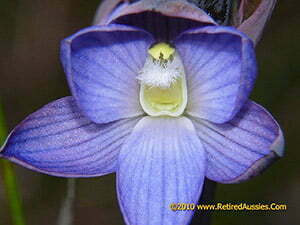 View Source | Click here |
| Thesium australe | Austral Toadflax, Toadflax | Vulnerable | Vulnerable | Santalaceae | Small straggling herb. Semi-parasitic, taking water and some nutrients from a range of grass species. | 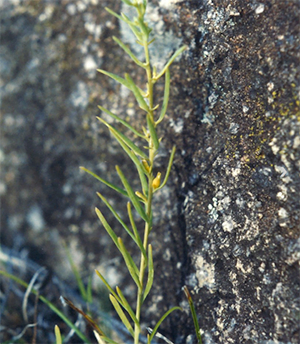 View Source | Click here |
| Trachymene scapigera | Mountain Trachymene | Endangered | Endangered | Apiaceae | Perennial, rhizomatous, robust herb, with white to pinkish flowers in summer. Occurs in riparian habitats. | 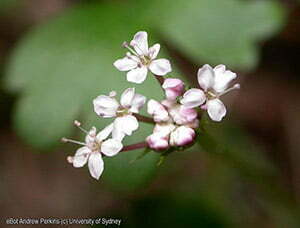 View Source | Click here |
| Triplarina nowraensis | Nowra Heath-myrtle | Endangered | Endangered | Myrtaceae | Aromatic shrub with white flowers. Occurs on poorly drained sandstone shelves and along creek lines. | 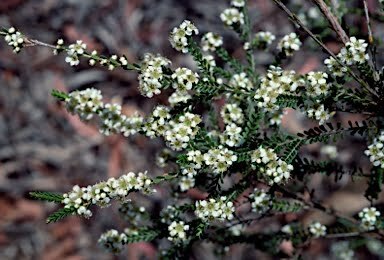 View Source | Click here |
| Xerochrysum palustre | Swamp Everlasting, Swamp Paper Daisy | Vulnerable | Not listed | Asteraceae | Grows in and on the edges of swamps and bogs. | 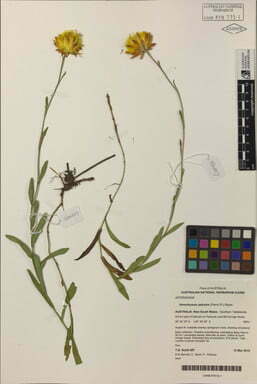 View Source | Click here |
| Zieria granulata | Hill Zieria, Hilly Zieria, Illawarra Zieria | Endangered | Endangered | Rutaceae | Tall bushy aromatic shrub restricted to the Illawarra region. | 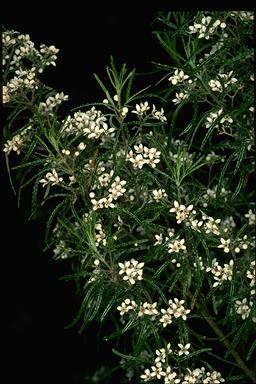 View Source | Click here |
| Zieria murphyi | Velvet Zieria | Vulnerable | Vulnerable | Rutaceae | Soft hairy shrub with pale pink flowers in spring. Grows in sheltered gullies on sandstone. |  View Source | Click here |
Getting extra help:
There are many government and community organisations armed with information and expertise to help you.
Apart from the valuable support offered by the Rivers of Carbon team, getting in touch with Local Land Services in your area to see what assistance and information is available is a great start.
The Australian Network for Plant Conservation is a wonderful source of information and regularly run workshops and field days focusing on plant conservation. They also have a regular publication called Australasian Plant Conservation as well as publications on translocations and germplasm which features many practical articles and information, some involving land managers working with threatened species. Your local Land care group and Greening Australia will also be able to provide support.
Contacts such as these are often able to guide you to where to seek resources and / or funding, typically in the form of grants, and can cover actions including fencing, weed management, planting enhancements and so on.
There are of course many resources available through the internet, but to ensure best practice, we suggest before undertaking plant conservation actions that you get plants correctly identified by professionals. Connecting with your local conservation department and threatened species officers is the best way to get up to date and accurate information and assistance. There is also an app on the Office of Environment and Heritage website to help identify threatened species that may be of assistance.
Working with threatened species can be both a rewarding opportunity as well as a challenge. Working in collaboration and sharing experiences including successes and failures helps us all to become better custodians of our special and unique natural capital.
Thank you to Julie and David from the Australian National Botanic Gardens, as well as Water NSW and Australian River Restoration Centre for the continued support for the Rivers of Carbon projects.

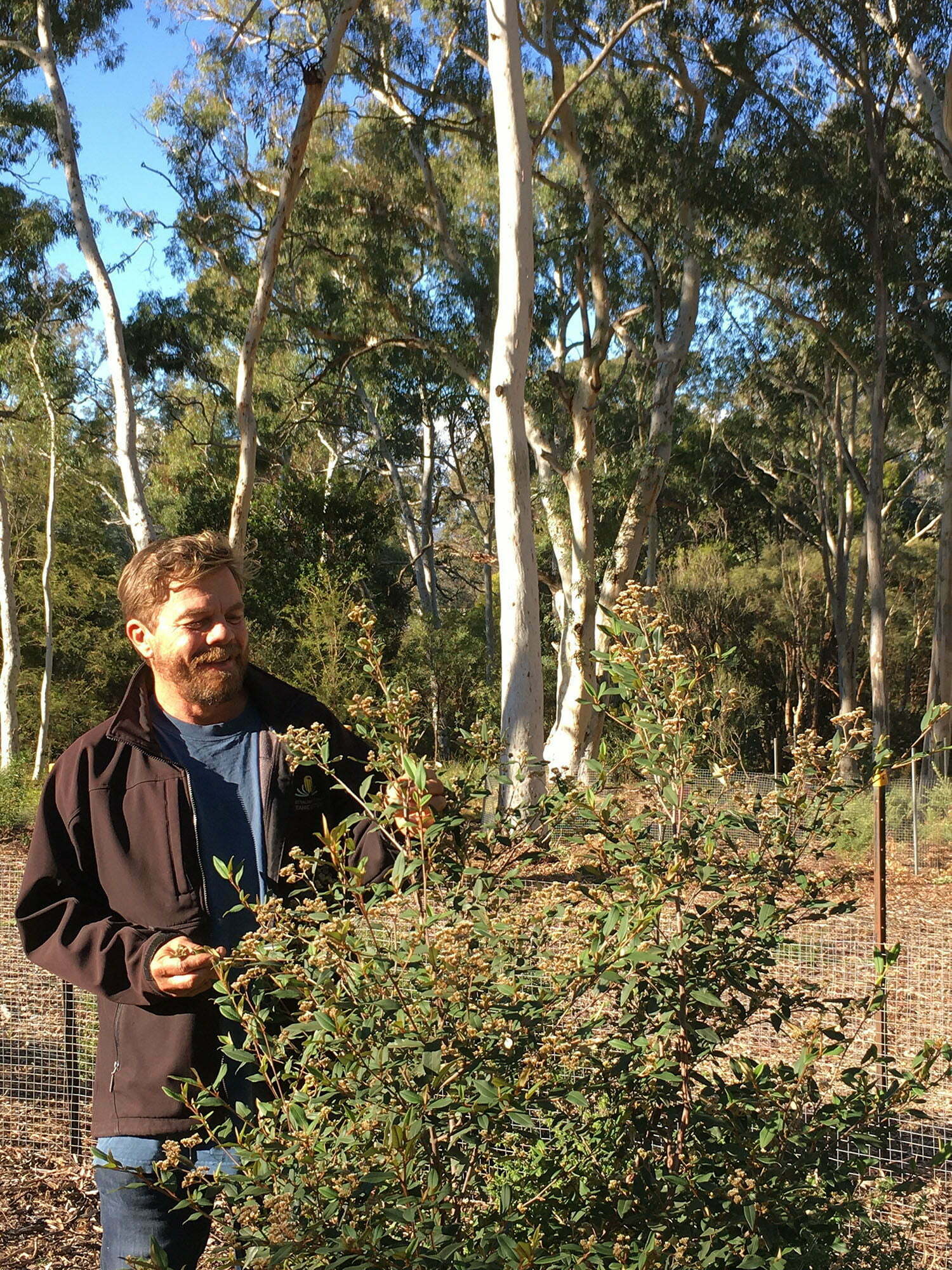
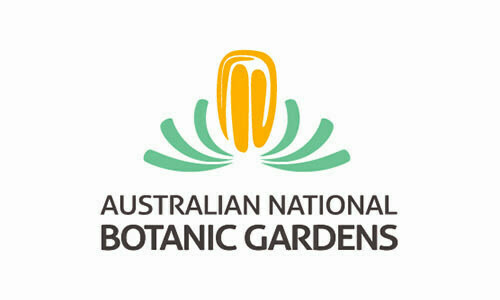

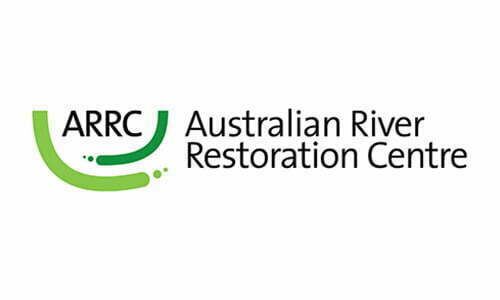
Collecting and caring for seed from Australian native plants
The reintroduction of species into the landscape relies on seed collection for plant propagation and direct seeding. Our partners at Greening Australia have worked with us to put together this handy guide based on their Florabank Program, covering things you need to think about when collecting, propagating and storing native seed.
